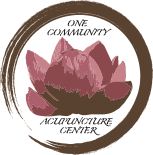
The Problem: Relying Too Much on Medication
If you’re like many people today, you’ve probably found yourself reaching for a pill bottle to silence your body’s cries of pain. It’s a quick fix, sure, but is it a real solution? Over time, relying solely on medications can lead to an array of unwanted side effects—gastrointestinal issues, dependency, or even tolerance, where the effectiveness diminishes. This is a common misconception: that immediate relief equals healing. However, merely masking symptoms fails to address the underlying issues causing your discomfort.
Why Acupuncture and TCM Are Effective Solutions
Traditional Chinese Medicine (TCM) and acupuncture offer a refreshingly different approach. Rather than focusing solely on symptoms, they explore the root causes of your pain, treating your body as an interconnected system. This holistic perspective not only alleviates symptoms but also promotes overall health, reducing the likelihood of future issues.
Here’s how acupuncture makes a difference:
Natural Pain Relief: Acupuncture stimulates the body’s own healing chemicals, helping to relieve pain naturally.
Reduced Inflammation: By improving circulation and calming inflammation, acupuncture can help heal the underlying conditions that contribute to your pain.
Balanced Body Systems: TCM addresses imbalances in the body systems that might be contributing to your symptoms, promoting long-term health and wellness.
Three Actionable Steps to Transition to Holistic Care
1. Educate Yourself About the Benefits of Acupuncture
Start by learning more about how acupuncture works. Understand the principles of Qi (energy), meridians, and the holistic approach TCM takes. Knowledge is power, and the more you know, the more comfortable you’ll feel making the transition.
2. Consult with a Qualified Acupuncturist
Find a licensed acupuncturist and schedule a consultation. Be open about your medical history and your current use of medications. A good practitioner will work with you to devise a plan that addresses your specific needs, possibly coordinating with other healthcare providers to ensure a smooth transition.
3. Start Gradual Integration
Don’t quit your medication cold turkey. Integrate acupuncture treatments into your routine while you and your healthcare provider monitor your progress. Over time, you might find that your need for medications decreases as your body begins to heal more naturally.
Embracing a New Path
Transitioning from reliance on medications to embracing acupuncture and TCM for pain management is a journey towards empowering your own health. Each step forward is a step towards a more vibrant, balanced life where you’re not just managing pain, but thriving in spite of it.
Remember, shifting to holistic health care with acupuncture is not just about treating pain—it’s about transforming your approach to health care. It’s about living a life where you control your health, not one where your health controls you.












